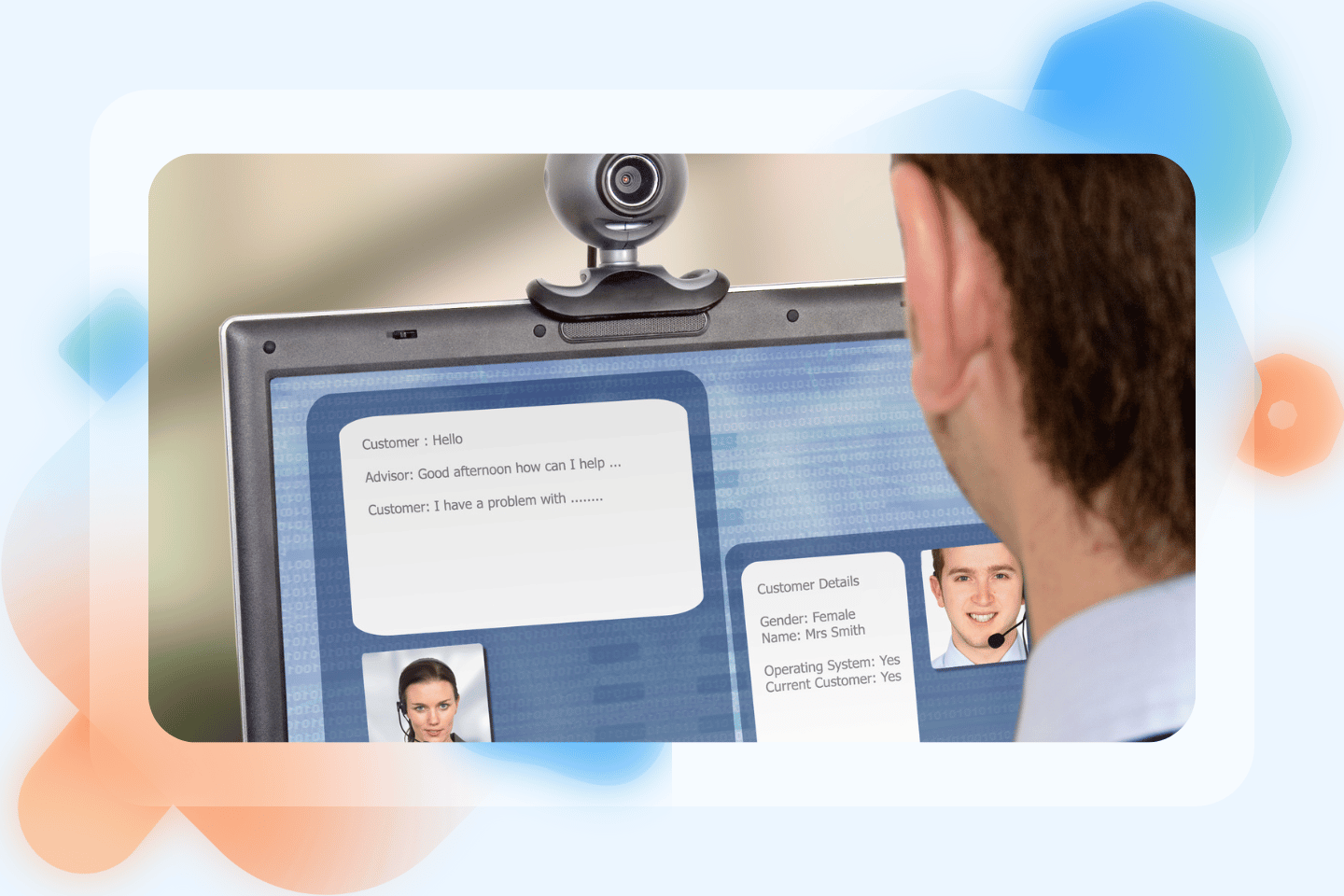The rise of digital marketing paved the way for businesses to tap into global markets—but it also opened the floodgates to a sea of unwanted competition. In this cutthroat market, great offerings alone are no longer enough to make you stand out. Customer service is now considered a key differentiator; bad customer service can lead your business to failure.
A quick Google search will allow prospective customers to access thousands—if not millions—of products and services worldwide. While the quality of your offering plays a crucial role in successful sales, the emotional connection you build with your customers truly sets you apart from your rivals.
A Zendesk study revealed that “roughly half of customers say they would switch to a competitor after just one bad experience. In the case of more than one bad experience, that number snowballs to 80%.”
Let that sink in. It’s a sobering thought that highlights customer service’s critical role in shaping your success.
The good news is that lousy customer service is easily avoidable. With the right customer strategy at your disposal, you not only curb customer churn but can also boost your revenue.
In this blog, we’ll explore the impact of bad customer service and must-know tactics for avoiding customer churn and revenue loss.
What is poor customer service?

Poor customer service simply refers to the inadequate level of service provided by a business to its customers. This typically takes the form of unresponsiveness, a lack of empathy, failure to address concerns in a timely manner, and an overall negative or indifferent attitude toward customers.
Naturally, your customers want the opposite of this. They expect a seamless and engaging journey from initial contact—be it through emails, phone calls, voicemails, or website contact forms—all the way through the resolution of their cases, and possibly beyond.
How does bad customer service impact your business?

Let’s face it. Even the best customer support teams and service team can have their off days. And when that happens—it can show in their work, leading to more examples of bad customer service. The impact of those slip-ups goes way beyond just one unhappy customer. It ripples throughout the entire business, messes with your brand rep, hits customer loyalty, and, of course, targets the bottom line.
To help you understand, we’re unpacking ten ways lousy customer service can harm your business:
1. Customer dissatisfaction
Dissatisfaction is the most evident and palpable way poor customer service impacts business. When expectations aren’t met, and issues aren’t addressed promptly, customers are left with a sour taste and a lasting negative impression.
In fact, 62% of customers surveyed will no longer make a purchase if their issue isn’t solved on the first attempt.
What does this mean? When customers aren’t satisfied, they leave—resulting in losses. However, it’s more than just a minor financial setback. Each dissatisfied customer represents a missed opportunity for continued business, jeopardizing the potential for lasting partnerships.
2. Loss of customer loyalty
Let’s say you’ve launched a new venture. After a few months of consistent growth, you’re stumped by a sudden decline in revenues, signaling a loss of customers. Fluctuations like these are common in today’s volatile market. Fortunately, there’s a reliable strategy to sustain a steady stream of business: cultivating and nurturing customer loyalty.
Customer loyalty is a top priority for subscription-based businesses especially since it translates to monthly recurring revenue (MRR).
There is a caveat, however. While loyalty is hard to build, it’s quite easy to lose. When poor customer service shakes the foundations of loyalty, businesses stand to lose a solid customer base. On the flip side, exceptional customer service can fuel loyalty.
Case in point: a study by HubSpot proves that almost three out of 4 (73%) customers stay loyal to brands because of helpful agents.
3. Negative word-of-mouth
Word-of-mouth (WOM) is definitely no new kid on the block, it’s been around forever. According to BigCommerce, about 74% of consumers consider word of mouth a crucial factor influencing their purchase decisions. With WOM’s growing influence, businesses have more on the line than ever before.
What is the implication of this? A single bad review about your customer service from a person with substantial clout could potentially tank your reputation. In fact, 36% of consumers will talk about their customer service experience—so give them something good to share.
4. Decreased customer retention
When customer service suffers, you’re essentially bidding your loyal customers farewell. Customer retention is cost-effective, rewarding, and keeps your churn rate low.
Bringing in a new customer costs significantly more than maintaining the ones you already have. Keeping your existing customers happy is not just good practice, it’s a critical move to keep the business afloat. When you put effort into retaining your customers, they stay. When they stay, your revenue can continue increasing.
5. Reduced revenue
At the end of the day, business is all about staying in the green and keeping a healthy bottom line. We can’t expect unhappy customers to make repeat purchases or splurge on additional products and services from your business. Ultimately, less sales translates to reduced revenue for the company.
This is why top-notch customer service is crucial for a thriving business. In fact, Bain and Company found that businesses that prioritize customer service can grow their revenue by up to 8%.
6. Damaged brand reputation
Brand image is not just about looking fancy; it’s about how people perceive your business. Customers don’t just buy your products; they buy your brand, your values, and your culture—and customer service is a crucial aspect of that.
For instance, consider brands that have been boycotted or canceled for being un-environmentally sustainable or having unethical labor practices. In the same vein, consistently dishing out a poor service experience can tarnish a brand’s reputation, making it challenging to attract new customers.
7. Loss of competitive edge
Businesses that nail excellent customer service are playing the long game. They understand that to truly capture a market, they need to meet the needs of their customers. From building loyalty to understanding market needs, they’re leveraging customer service as a way to get ahead of the curve.
Exceptional customer service has grown to become a major differentiator across industries. To stay competitive, businesses shouldn’t just settle with top-of-the-line offerings. They should match their products and services with outstanding service. It’s the critical factor that sets you apart, keeps customers hooked, and makes them choose you over the rest.
8. Higher customer acquisition costs
The relationship between customer churn and acquisition costs is quite clear. When businesses suffer from high churn, their profit margins naturally shrink. Since customer acquisition is more costly than customer retention, the bottom line suffers.
For businesses that can’t bring their A-game to customer service, the worst scenario is inevitable—higher churn and acquisition rates. A damaged reputation forces businesses to channel more funds towards marketing, with the goal of attracting new customers to replace those that they lost due to crappy customer service efforts. The cycle repeats itself as they again lose more customers to poor service.
9. Involvement in legal issues
When businesses slack off on customer service, the consequences can be dire. And in some extreme cases, it can even land you in legal hot water.
For instance, a simple miscommunication or honest mistake can be misconstrued as an act of discrimination, especially in today’s woke era. Some might decide to take matters to court, and that’s when the real headaches start.
10. Employee disengagement
Over 63% of employees suffer from burnout, which is a pandemic of its own—and your employees are no exception. Dealing with irate and frustrated customers is stressful enough as it is, but without a proper customer service strategy in place, your in-house staff will be ill-equipped to handle the volume and complexity of touchpoints.
As work frustration kicks in, you can expect increased turnover, reduced morale, and a negative work environment. So to keep your employees happy and your business humming, put customer service front and center. Employee training is a good place to start. You can also invest in cutting-edge technology to help streamline some repetitive processes and ease your staff’s workload.
9 statistics that illustrate the true cost of bad customer service

Whether you’re a start-up or a Forbes-ranked industry leader, this quick rundown is here to prove why you should put customer service at the center of your operations.
67% of customers point to poor customer experience as their reason for abandoning brands.
What this means for your business: It only takes a single disappointing interaction for more than half of customers to switch brands. So, you need to ensure the consistent quality of service across all touchpoints and channels
70% of customers emphasize that agents need to be informed on sales transactions for them to retain their business.
What this means for your business: Customers expect agents to keep track of their transactions since repeating information can be frustrating for them. Helpdesk tools will be super helpful for this as they can facilitate smooth and seamless omnichannel experiences.
80% of customers believe that customer experience is just as indispensable as the quality of its products or services.
What this means for your business: Businesses need to invest just as much resources in their customer service as they do in their offerings.
87% of consumers rely on online reviews about local businesses.
What this means for your business: Businesses should maximize online platforms by encouraging their customers to leave positive reviews.
13% of consumers tell 15 or more people about a negative customer service experience
What this means for your business: Plug the negative word-of-mouth pipeline by ignoring customer feedback and immediately addressing issues from your most unhappy customers. Leave no room for negative experiences, and aim to always deliver satisfaction.
Only 1 in 26 customers will tell you about their negative customer experience, the rest will just switch brands without telling you why.
What this means for your business: Just because a customer did not offer negative feedback does not necessarily mean your customer service department is satisfactory. Reach out to them to know what they think—conduct surveys or send feedback forms with incentives.
Feeling unappreciated emerges as the leading reason why customers switch brands.
What this means for your business: Businesses should go out of their way to make customers feel seen, heard, and valued. A frustrated customer can easily pack up and go to a competitor.
35% of customers admitted to getting angry while talking to customer service.
What this means for your business: Businesses must anticipate irate customers and have established standard operating procedures (SOP) when it comes to handling them.
78% of customers have abandoned transactions due to negative customer experience.
What this means for your business: Businesses must treat every customer service touchpoint as an opportunity to protect profits.
10 tips to prevent bad customer service

1. Prioritize employee training
First things first, get your entire customer service team on the same page by investing in training that hones their customer service skills. This ensures you are fully equipped to take on any concern that comes your way.
From effective communication to adept problem-solving, training should cover a wide range of competencies that will guarantee every member of your team can navigate the challenges that arise in customer support.
2. Set clear customer service standards
Create a guidebook of customer service standards. Let your team know what excellence looks like and why it matters. Consistency is key, so make sure everyone’s on board with the same high-quality service standards.
Clearly articulate the behaviors, attitudes, and practices that embody great customer service. This lays the foundation for a shared understanding and commitment.
3. Active listening matters
Train your team to actively listen to customers. Encourage your team to ask probing questions, seek clarification when needed, and paraphrase information to ensure thorough understanding.
Genuinely understanding customers’ needs is like having the ultimate cheat code for resolving issues. Plus, it shows you genuinely care.
4. Embrace a customer-centric culture
Embody a positive customer experience and a customer-centric working culture. Every team member needs to understand that keeping customers happy is not just a job but a way of life.
Beyond just addressing issues, your team must be prepared to anticipate future needs, exceed customer expectations often, and consistently go the extra mile to keep customers satisfied.
5. Swift resolution of issues
Studies show that response time is a huge factor in customer satisfaction—for 85% of consumers, short waiting times should be the top priority.
This is why you need to arm your team with the tools and authority to fix problems ASAP. A quick solution not only keeps your customers satisfied but can also prevent minor issues from turning into major problems in the long run.
6. Collect and utilize customer feedback
Train your team not to shy away from customer complaints and feedback. Collect valuable insights from customers and use that valuable information to fine-tune your customer service strategy. Check out these survey tools you can use.
7. Create user-friendly processes
Simplify your processes. Implement user-friendly channels for collecting feedback. Whether it’s through surveys, direct interactions, or online platforms, make the process effortless for customers to share their thoughts.
No one wants to navigate through a maze just to get in touch with you. Keep it simple, keep it smooth, and keep your customers satisfied.
8. Be transparent and honest
Don’t be afraid to admit mistakes. Encourage your team to offer sincere apologies when necessary. A genuine apology, coupled with transparency, demonstrates accountability and a commitment to making amends for any inconvenience. Customers appreciate openness, and it builds consumer trust, which is an extremely vital commodity in business.
9. Stay ahead with technology
Embrace AI tools and up-and-coming technology to elevate your customer service. From chatbots to CRM systems, tech can make the customer experience smoother than ever. Strategically incorporating these tools into your customer service approach allows you to streamline processes and enhance the overall customer experience.
In fact, a new AI tool on our radar is Ariglad. Their new smart knowledge base automatically updates and creates knowledge bases for you, so your customer service team and customers can be given the most relevant and updated information.
10. Work with certified experts
The truth is, not all businesses have the in-house capacity to give it justice. Some start-ups and small businesses may struggle to keep up with the influx of inquiries they get every day. Meanwhile, larger enterprises may want to focus on developing their core strengths for growth.
Whatever your business size, you can rely on outsourcing customer service. Not only is it a more cost-efficient alternative to an in-house customer support team, but it is also fully scalable and customizable—meaning, it can meet your needs and demands, regardless of your business goals.
Level up your customer service With LTVplus

With a focus on exceptional experiences, LTVPlus brings a host of advantages to businesses in need of customer support. At the heart of our team are highly trained and skilled customer service experts who specialize in providing top-notch support.
We don’t just stop at traditional customer service. Instead, we embrace technology as a means to provide a seamless and efficient support experience. Leveraging cutting-edge tools, analytics, and communication platforms, LTVPlus enhances the speed and accuracy of customer interactions.
Whether handling inquiries, resolving issues, or building strong customer relationships, the LTVPlus team is dedicated to delivering the gold standard of service excellence. Reach out to us today to learn how we can help you level up your customer service!




